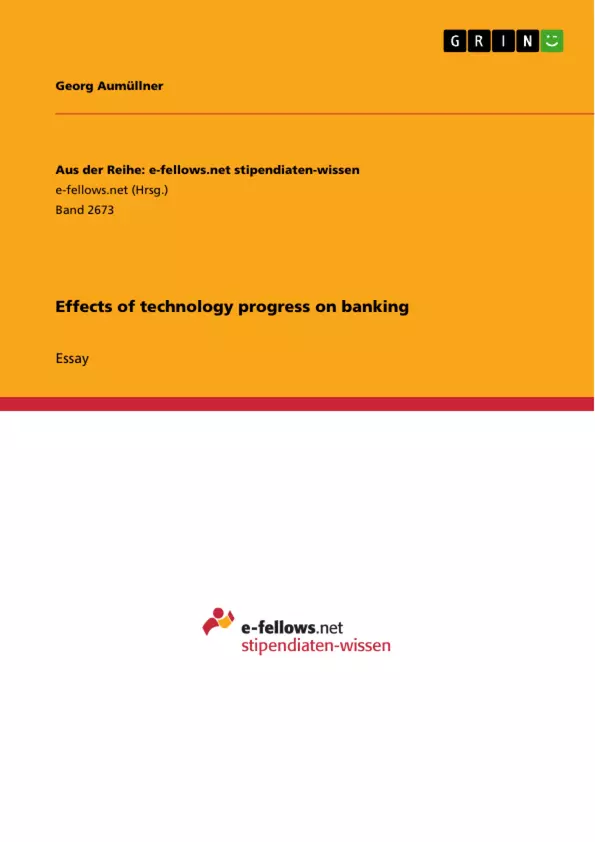The banking sector has experienced drastic changes in the last few decades which were primarily driven by technological progress and bank consolidation. The consolidation has led to fewer branches and greater distance between banks and their borrowers. As a result, the availability of credit to small businesses decreased because banks could not assemble enough information over great distance to evaluate a borrower’s loan application.
Inhaltsverzeichnis (Table of Contents)
- Introduction
- Small Business Credit Scoring (SBCS)
- Positive Effects of SBCS
- Increased Availability of Credit
- Reduced Costs
- Limits of SBCS
- Loss of Valuable Information
- Importance of Soft Information
- Higher Default Rates
- Conclusion
Zielsetzung und Themenschwerpunkte (Objectives and Key Themes)
This paper explores the impact of technological advancements, specifically small business credit scoring (SBCS), on the importance of distance in small business lending. It aims to examine both the positive effects of SBCS, such as increased credit availability and reduced costs, as well as its limitations, highlighting the continued significance of soft information and the potential for higher default rates.
- The role of technology in small business lending
- The impact of distance on credit availability and costs
- The limitations of hard information in evaluating creditworthiness
- The continued relevance of soft information in small business lending
- The relationship between distance, default rates, and loan pricing
Zusammenfassung der Kapitel (Chapter Summaries)
- Introduction: This chapter provides an overview of the changes in the banking sector driven by technological progress and bank consolidation, highlighting the challenges faced by small businesses in accessing credit due to increased distance.
- Small Business Credit Scoring (SBCS): This chapter explores the capabilities of SBCS, focusing on its ability to leverage hard information, such as financial statements, to predict loan performance. It discusses the positive effects of SBCS, including increased credit availability and reduced costs.
- Limits of SBCS: This chapter examines the limitations of SBCS, arguing that while it can partially substitute for soft information, it also leads to a loss of valuable information and can result in higher default rates. The chapter emphasizes the continued importance of local presence and soft information in evaluating creditworthiness.
Schlüsselwörter (Keywords)
This paper focuses on the impact of technological advancements in the banking sector, particularly small business credit scoring, on distance in small business lending. Key terms include small business lending, credit scoring, hard information, soft information, distance, credit availability, loan pricing, default rates, and bank consolidation.
- Citar trabajo
- Georg Aumüllner (Autor), 2017, Effects of technology progress on banking, Múnich, GRIN Verlag, https://www.grin.com/document/389076



